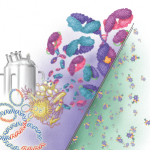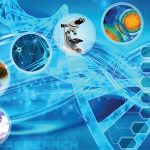WASHINGTON, D.C.—Officials with the U.S. Food & Drug Administration (FDA) described the agency’s extrapolation approach for approving drugs in pediatric rheumatology and reviewed several recent approvals in a session at ACR Convergence 2024. They also described similarities and differences in how biosimilar therapies and interchangeables are approved.
The speakers fielded an array of questions on the lack of availability of biosimilar medications for some pediatric conditions and in some formulations, and on lingering confusion from clinicians about biosimilar products that can affect how they may prescribe therapies for their patients.
Recent Drug Approvals in Pediatric Rheumatology
Ozlem Belen, MD, MPH, deputy director of the FDA’s Division of Rheumatology and Transplant Medicine, reviewed the approvals over the past year of sarilumab, certolizumab pegol and upadacitinib for pediatric juvenile idiopathic arthritis (pJIA), all of which werebased on the extrapolation approach. This strategy relies on pharmacokinetic matching and extrapolation from established efficacy data from the relevant adult population to provide evidence of effective and safe use in the pediatric population.
“In this approach, we have to assume that the course of disease and expected response to drug product would be sufficiently similar in pediatric and adult populations,” said Dr. Belen.
Pharmacokinetic extrapolation was supplemented with data from open-label studies of 93 patients for sarilumab, 193 for certolizumab and 83 for upadacitinib.
The FDA also recently approved upadacitinib for pediatric psoriatic arthritis (PsA), even though this indication was not directly studied. Instead, Dr. Belen said, the decision was based on an extrapolation of efficacy from adults with PsA and on safety data from patients with JIA who had active polyarthritis.
Dr. Belen also described a recent update to safety labeling for tocilizumab, anakinra and canakinumab, Interleukin (IL) 1/IL-6 inhibitors. The data indicate the drugs can cause drug reaction with eosinophilia and systemic symptoms (DRESS)—a severe, life-threatening, delayed-onset reaction characterized by skin manifestations, fever, lymphadenopathy, hematologic abnormalities and internal organ involvement. After drug withdrawal, the symptoms generally resolve gradually, she said.
“The DRESS cases considered relevant for the labeling changes were serious, including one with a fatal outcome, and had reasonable evidence of causal association between DRESS and these products,” she said.
Biosimilars & Interchangeable Products
Suzette Peng, MD, a medical officer in the Division of Rheumatology and Transplant Medicine, reviewed the FDA’s program for developing biosimilars, saying they’ve had a big impact on healthcare.
According to Dr. Peng, “Biosimilars are delivering savings and expanding patient access.” As of October, 61 biosimilars had been approved for 17 reference products, saving $36 billion and resulting in 495 million days of therapy that wouldn’t have been possible without them, with no reports of major safety or efficacy issues, she said. (Note: In the question-and-answer period following the presentation, one attendee questioned the claim of savings, asking where those savings are being recognized and by whom. The question went unanswered.)
The comparative analytical assessment, or CAA, is the main foundation behind biosimilar development. It offers detailed comparisons of structure and function in state-of-the-art ways that have been shown to be sensitive and reliable for showing product differences between biosimilars and the original, she said.
A biosimilar is “highly similar to and has no clinically meaningful differences from the FDA approved reference product,” despite the unavoidable existence of “inherent variation” across batches that is seen in all biologic therapies, including the reference products, she said.
For an interchangeable product, the manufacturer has to seek special approval.
“The manufacturer of an interchangeable biosimilar needs to submit information to show that the proposed product can be expected to produce the same clinical result as the reference product in any given patient and also that the risk, in terms of safety or diminished efficacy of alternating between the biosimilar and the reference product, is not greater than the risk of using the reference product without such a switch,” she said.
The FDA recently issued new guidance on interchangeability, saying that switching studies—in which outcomes for patients who have switched from a biosimilar to a reference product or vice versa are compared with outcomes from patients who haven’t switched—are no longer required. An FDA analysis of more than 5,000 cases of switching, compared with 5,000 control cases, showed no differences in deaths, adverse events, discontinuations or immunogenicity. The comparative analysis itself is “a more sensitive evaluation for potential differences between biosimilars and their reference products,” Dr. Peng said.
Addressing Open Questions
Audience members expressed some frustrations and confusions about pediatric therapies.
Laura Schanberg, MD, professor of pediatrics at Duke University, Durham, N.C., said she and others are not sure what to make of the interchangeable designation.
“I’m still confused about the difference between interchangeability vs. just the more general biosimilar,” Dr. Schanberg said. “I understand the difference in whether it needs to be approved by a doctor, but how is that decision actually made? What difference does that actually represent?”
The underlying biosimilarity standard is the same for both, Dr. Peng said, but interchangeability has a “statutory requirement” that a manufacturer must show that, if you switch, “you won’t show more increased risk or diminished efficacy.” She added that this is often done by providing the same information provided for biosimilar designation.
Dr. Schanberg said the distinction is not clear. “I think it causes confusion for consumers—certainly it is for prescribers—about whether really the interchangeables are of a higher quality, which I know you specifically say they aren’t. But it certainly does suggest that to the community.”
Dr. Peng said she hoped that with the FDA’s recently revised guidance, people will “know that the underlying standard is the same.”
Another audience member noted that the lack of biosimilars for adalimumab that are approved for pediatric uveitis “causes us many headaches.” Such omissions in indications typically arise from issues of exclusivity, Dr. Peng said.
Michael Shishov, MD, MPH, a pediatric rheumatologist in Phoenix, said he was “a little confused about how these conditions are chosen” for approval through extrapolation analysis. For example, he noted, pediatric oligoJIA, a common condition, has no FDA approvals.
In general, Dr. Belen said, decisions on extrapolation studies are made based on disease process, pathophysiology and how well they can be replicated in a pediatric population. Pediatric studies can be difficult to complete, in part due to enrollment challenges.
Jessica Perfetto, MD, a pediatric rheumatologist at NYU Langone in New York City, asked whether the same commercially available assays used for reference drugs can be used to assess drug levels and anti-drug antibodies.
“Given that the active ingredient is the same, you would expect that you would be able to use the same assays, but I don’t know the answer to that for sure,” Dr. Peng responded.
A pediatric rheumatologist from Italy expressed frustration that there is no lyophilized powder formulation for etanercept, even though this is the only formulation that can be used for pediatric patients less than 32 kg. Dr. Peng said that the FDA does not mandate what formulations are developed.
A pediatric rheumatologist from Toronto asked about the DRESS safely labeling.
“Detection of these reactions is quite challenging,” he said. “I’m wondering why the agencies chose to use DRESS as the terminology for the warning, because most of these reactions do not look like a classical DRESS that we know from other medications. And I’m wondering if there’s more guidance that could be provided to clinicians.”
Dr. Belen said this labeling has received a great deal of consideration and may not be finalized. “We’re getting more information, and the labeling could be updated in the future.”
However, “the main consideration” was that some publications are using the DRESS nomenclature, she said. In addition, the warnings and precautions in the labeling describe cases involving hypersensitivity outside of the DRESS definition, so hypersensitivity reactions in general are covered.
Thomas Collins is a freelance medical writer based in Florida.





